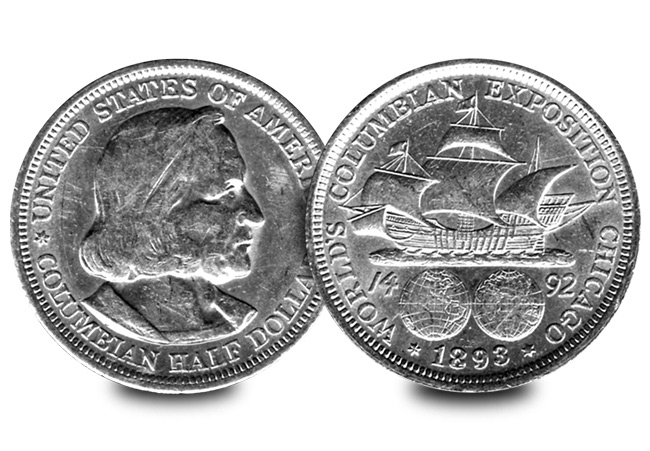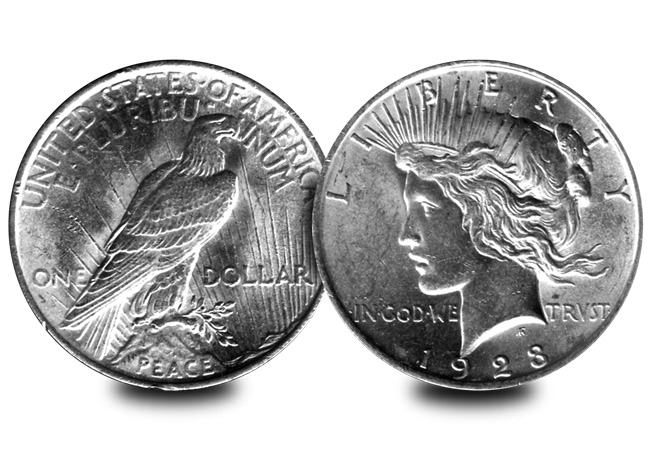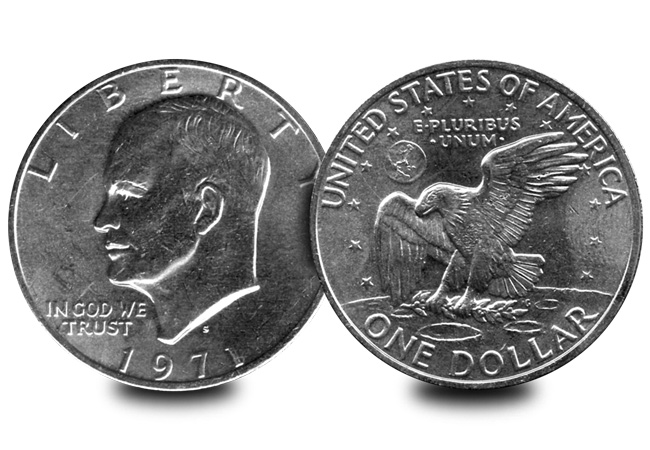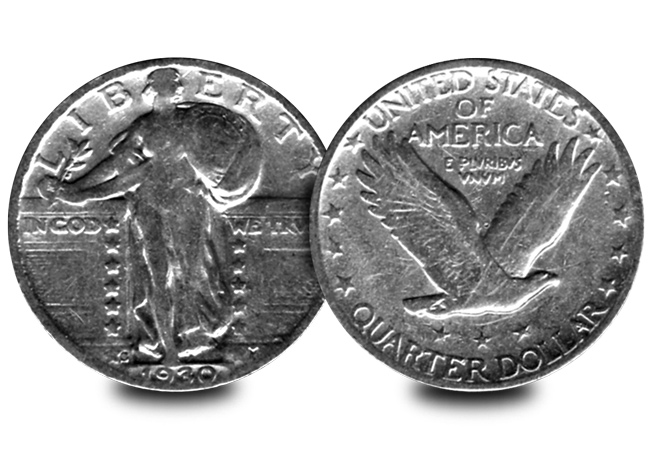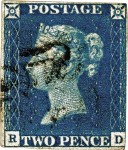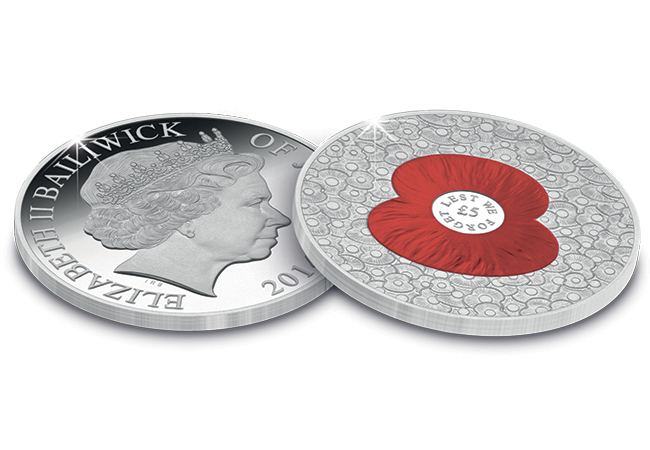Six of the most collectable US coins ever issued
The coinage of the United States tell some truly fascinating stories about America’s heritage. To hold a US coin in the palm of your hand can feel as though you are literally holding a piece of history.
I have always been intrigued by American coins, but there are so many that it is a difficult decision knowing which ones you should own.
But, after some research, I have discovered what I believe to be some of the most interesting coins from the past 120 years of US numismatic history.
While they aren’t necessarily the best coins out there, they are certainly the ones with the most intriguing stories behind them…
1. Columbian Half Dollar (1892-1893)
The 1892 Columbian Half Dollar was the first ever commemorative coin issued in the United States. It was intended to raise money to fund the World’s Columbian Exposition, held in Chicago in 1893 – each half dollar was sold with a 50 cent surcharge which went towards the project. The design pays tribute to the 400th Anniversary of Christopher Columbus’s arrival in the New World in 1492.
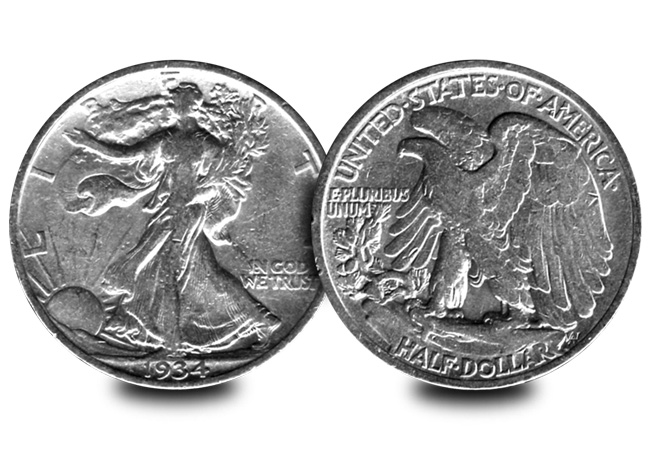
The Walking liberty Half Dollar is often referred to as the most beautiful circulating American coin.
2. Walking Liberty Half Dollar (1916-1947)
Struck from 1916 until 1947, the Walking Liberty Half Dollar is sometimes referred to as the most beautiful circulating American coin. Its design, by Adolph A. Weinman, owes more to sculpture than functionality, and was critically acclaimed upon its issue. In respect of its status, the design has been reprised as the obverse of the current ‘Eagle’ series of Silver Bullion coins, making it one of the most recognisable designs in American numismatic history.
3. Peace Dollar (1921-1935)
The Peace Dollar was proposed as a lasting commemoration after the tragedies of World War I. It was also the last ever Silver US coin struck for circulation. Featuring an eagle clutching an olive branch above the word ‘peace’ on the reverse, the coin was not without controversy. Word escaped that the design was to include a broken sword next to the eagle, but this was seen as a symbol of defeat. Public outcry stopped the design, but the dies had already been finished. Remarkably, amendments were carried out so skilfully that for 85 years it remained a secret that the sword had ever been engraved onto the coin.
4. Kennedy Half Dollar (1964-Present)
One of the most poignant American coins, this Half Dollar was commissioned just months after Kennedy’s assassination, and was in circulation by 1964 – a remarkable feat of planning and design. Your version is one of the very first coins struck, and contains 90% silver content. The combination of the emotional resonance of the coin with the silver content led to extensive hoarding and from 1965 the silver was reduced and eliminated entirely in 1971.
5. Eisenhower Dollar (1971-74 & 1977-78)
This coin was proposed in 1969 as a commemoration of two major events that occurred that year. The first was the passing of former president Dwight D. Eisenhower, and the second was the success of the Apollo II mission landing on the moon. The coin was eventually released in 1971 and features an interpretation of the Apollo II insignia on the reverse and Eisenhower’s effigy on the obverse. There is speculation that the production of this coin was encouraged by lobbying from the Gambling industry, who wanted a large dollar coin in circulation for use in their casinos.
6. Standing Liberty Quarter (1916-1930)
The Standing Liberty Silver Quarter was first minted in late 1916 and instantly became America’s most scandalous coin. The designer was famed sculptor Hermon A MacNeil, and he used Broadway actress Irene MacDowell as the model for Lady Liberty. However, Liberty was shown with an exposed breast – and the Society for the Suppression of Vice was very vocal about the coin being immoral and obscene. There was such an uproar that the U.S. Mint was forced to change the design in 1917 to cover Liberty’s breast with a chain-mail shirt.
The Penny Black – the world’s first and most famous stamp
The world’s first postage stamp, the Penny Black, officially turns 175 on 6th May 2015. Today, stamps are one of those everyday things which we take so much for granted that it’s impossible to visualise a world without them; but 175 years ago sending and receiving letters was a major operation, and a relatively expensive one.
Letters were charged according to the distance travelled and the number of sheets. To send a letter from London to Glasgow cost 18 pence – a couple of days’ wages for the average man – and it was the recipient who paid, not the sender!
In 1837 Rowland Hill led the campaign for Uniform Penny Postage, arguing that the main cost of the postal service was the cumbersome method of computing postage. A flat rate of a penny, paid by the sender, would slash costs dramatically – but to achieve this he had to devise a method of prepaying postage.
His answer was the introduction of prepaid stationery and also a label just large enough to bear the stamp and smeared on the back with a glutinous wash – this label would eventually become the Penny Black.
The Treasury organised a design contest for the new adhesive stamps but none of the submissions were considered suitable. Although he was not one of the prize-winners, Sir George Mackenzie came closest to what was eventually used for the stamp – an upright oblong with a portrait of Queen Victoria, with POSTAGE at the top and the value at the foot. The portrait was drawn by Henry Corbould from an effigy of Victoria when she was only 15.
On 6th May 1840, the Penny Black went into official use, followed two days later by the Twopenny Blue. Although a huge success, these stamps had a flaw and within weeks of their introduction, Rowland Hill’s worst fears were realised when it was found the general public had found ways of washing off the postmarks from the stamps and reusing them.
Immediately he set about a way to combat the problem in a series of experiments which has become known as the Rainbow Trials. As a result of the trials, less than a year after they were issued, it was decided to replace the Penny Black with the Penny Red and the Twopenny Blue would be reissued with added security measures.
Despite its short life, the legacy of the Penny Black still lives on today, 175 years after it was first issued. Its place as the world’s first postage makes it a must have for any collector. Click here to see our range of available Penny Black related products.
The “100 Poppies Coin” raises over £131,000 for The Royal British Legion

The presentation ceremony – from left to right: Stephen Allen (The Westminster Collection Chairman), Jim France (Royal British Legion Area Manager Hampshire & Dorset), Rachel Darby (The Westminster Collection Product Group Manager) and Jade Irons (Royal British Legion Corporate Partnership Officer)
The ‘100 Poppies’ Coin, launched by The Westminster Collection in partnership with The Royal British Legion last October has now raised over £131,000.
Since 2008, The Westminster Collection, has created a unique commemorative poppy-themed coin each year to honour those who have sacrificed their lives in the Armed Forces. However sales of the 2014 centenary edition coin have seen the biggest donation to date, ensuring that the memories of the fallen live on – as well as the care and support offered by The Royal British Legion.
The full amount was presented to The Royal British Legion by The Westminster Collection’s Chairman, Stephen Allen, on Tuesday 14th April at a special event held at The Legion’s pop-in centre in Southampton. The money raised will help The Legion provide financial, social and emotional support to all who have served and are currently serving in the British Armed Forces and their families.
Stephen said, “though we have been working in partnership with The Royal British Legion since 2004, the Poppy Coin came about in 2008 as a way to commemorate the 90th anniversary of the end of the First World War.
“We are delighted that the partnership has continued to grow, and our special Poppy Coins each year are a way of giving back to a charity that has done so much for both the Service community and the national spirit of Remembrance over the past 94 years.”
Charles Byrne, Director of Fundraising at The Royal British Legion, said the coin acts as “poignant reminder” of those who paid the ultimate sacrifice.
“We are so proud of our long-term partnership with The Westminster Collection, a family business which shares our commitment to supporting the entire Service community; whether it’s helping veterans to remain independent in their homes, supporting bereaved families, ensuring people have access to the benefits they deserve or offering employment advice.
“The Poppy Coin is not only a poignant reminder of those who have fought and sacrificed their lives, it also helps the Legion to carry out our vital welfare work, allowing today’s Armed Forces, veterans and their families to live on to a more hopeful future.”
SAVE £10.00 on the new new VE Day Silver Medal
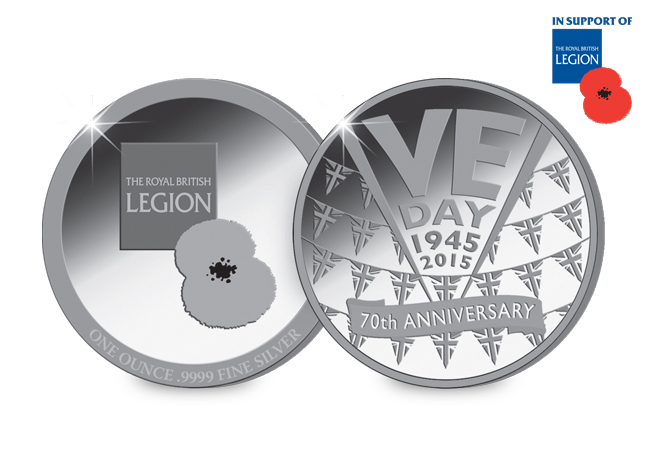 Following the success of last year’s coin, The Royal British Legion have teamed up once again with The Westminster Collection to issue an official VE Day silver medal to mark the 70th anniversary of the end of the Second World War.
Following the success of last year’s coin, The Royal British Legion have teamed up once again with The Westminster Collection to issue an official VE Day silver medal to mark the 70th anniversary of the end of the Second World War.
NOW SOLD OUT

